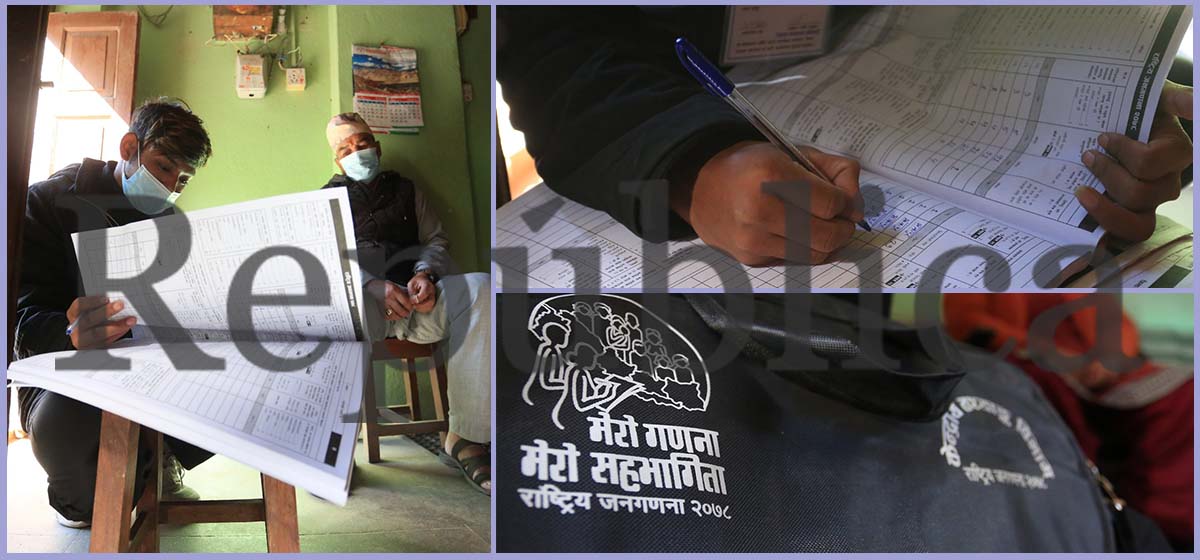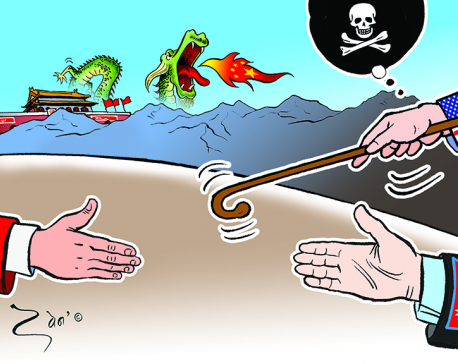
OR
Opinion
Population Census 2021: Data Vs Reliability
Published On: November 25, 2021 06:30 AM NPT By: Nir Bahadur Karki


Nir Bahadur Karki
The author was formerly a population and development expert with the Government of Nepal.nirbahadur85@hotmail.com
A high alert during the entire process of data collection under the census is of paramount importance to ensure the quality and reliability of the outcome of the census. The results need to be acceptable to different stakeholders ethnically, culturally, religiously, and geographically with clarity of identity of each segment of society as their fundamental right.
After a century and a decade of her census history, Nepal is currently taking her turn of conducting the 12th census commencing from November 11, 2021, till November 25, this year. A population census is an event that is closely associated with development. The outcome of a census brings policymakers to review the process of developing plans and programs based on the census results. Conceptually, a population census is a systematic collection of national data on the population of a particular time. Hence the outcome of the census reflects an account of a given country’s population at the census time. Most countries throughout the world have normally been taking periodic censuses once a decade from the 18th century onwards.
The first census was conducted in 1911 when Chandra Sumsher Rana was the prime minister in Nepal. Since that time onwards conducting the census has been a once- in- a- decade event of the Government involving a sizable amount of budget from the state treasury and mobilization of human resources from both the permanent civil service cadre and temporarily hired pool for this purpose. The Central Bureau of Statistics ( CBS) would have conducted this census in June but it got postponed due to the COVID-19. The outcome of this Census is eagerly awaited by the planners and policymakers for the purpose of goal setting and resource allocation for sectoral and multi-sectoral development accordingly keeping socio-cultural sensitivity in view as well. For political parties, it will be undoubtedly viewed from the vote bankers' perspectives.
The result of the census also draws the attention of different segments of society in terms of ethnic identity, cultural and religious sensitivity, and possible consequences as well. This obviously demands responsible answers from the respondents and courtesy of the questionnaires during the interview.
Nepal's 1911 census that showed her total population at 5638749 was conducted 90 years after Great Britain had done the same in 1801. The purpose of then Nepal’s premier Chandra S. Rana in taking the first census was to find out the country’s population simultaneously to know the number of young Nepalese capable to join Nepal’s military service and send part of the Nepalese Army to assist the British Government for a possible great war which the U. K. would fight. Eventually, the First World War broke out during 1914-18 for which contingents of the Gorkha -Nepalese Army were deployed in different war zones ultimately leading to the victory of the United Kingdom with the assistance of the then Himalayan Kingdom of Nepal.
The second and third censuses conducted in 1920 and 1930 revealed the country’s population at 5573788 and 5532572 respectively, displaying a downward curb from the first one that had stood at 5638749 seen as an unnatural phenomenon. Two possible causes were attributed by the demographers and economists for such decrease instead of increase. That the casualty of a number of Nepali soldiers during the World War negatively contributed to the reduction of population in the 1920 census and yellow fever for a similar reduced population of 1930 were cited as the cause of the decrease. Later on, it is also found that both censuses of 1920 and 1930 were conducted in the mid rainy season that also sounds logical owing to the inaccessibility to many destinations in view of transport and communications in those days for the enumerators also the respondents occupied in cultivation.
From the fourth census of 1941 that recorded Nepal’s population at 6283649 the country’s population continuously is embracing an upward trend currently estimated at around 30 million.
Though being conducted every 10 years from 1911, the censuses taken from 1952-54onwards have been considered to be scientifically conducted and accepted. The 1952-54 is the first case in the history of Nepal’s census when the census was taken twice i. e. in 1952 in eastern Nepal and in 1954 in western Nepal owing to the heavy floods throughout the country
A case of Nepal’s census is somehow similar to the case of the UK’s census wherein the censuses taken from 1841 onward after the establishment of the Registrar Office have all been considered scientific ones by surpassing the previous three censuses though the first one was taken in 1801. Nepal’s census of 1911, 1920, and 1930 was based on head counting while those from 1941 are based on scientific methods. Likewise, Britain’s census of 1801, 1820, and 1841 was conducted on head counting methods and the 1841 census embraced a modern method of data collection.
The methodologies applied and the questionnaire designed by the CBS in the current census is not debate free. If the version of a senior journalist Professor Dr Achut Wagley has any bearing on the way of conducting the 12th census, then it is of the 18th-century model being carried out in the 21st century. In this context, a high alert during the entire process of data collection under the census is of paramount importance to ensure the quality and reliability of the outcome of the census. The results need to be acceptable by different stakeholders ethnically, culturally, religiously, and geographically with clarity of identity of each segment of society as their fundamental right.
Similarly different international communities, diplomatic missions, bilateral and multilateral donors that are working as partners of Nepal’s progress also have eyes on the results of the census.
The UNFPA, a key partner in population and related developments, has been a major multilateral donor in Nepal’s population management coupled with family planning/reproductive health, maternity, and child health. It had assigned Dr. Yagya Bahadur Karki, later to be a member of the National Planning Commission, to review the methodologies applied in the census of 1991 which had revealed the growth rate at 2.08 as against 2.66 of 1981 census. The findings were presented at a gathering organized by the Population Division of the NCP chaired by the then vice-chairman Dr. Ram Saran Mahat attended by the representatives of almost all Nepal-based bilateral and multilateral donors. The debate had mainly focused on either undercounting or over counting. Dr Mahat, however, had come to defend the outcome of the census against the flaws of the census pointed out by Dr Karki and by a few donors’ representatives. This is the time that the CBS needs to keep a high alert during the entire census process currently underway in order to ensure the reliability of the census data.
(The author was formerly a population and development expert with the Government of Nepal. He can be reached at: nirbahadur85@hotmail.com)
You May Like This

Breaking the barriers
No matter how much we glorify role of ICT in improving education, it cannot happen without larger participation of teachers Read More...

Media for democracy
In a modern democracy, citizens feel empowered when they have adequate access to truthful information without which they cannot take... Read More...

Emerging challenges
As Nepal respects sensitivities of its neighbors and friends, they must also respect Nepal’s priority to safeguard its independence, right... Read More...
Just In
- KMC to organize a month-long skill fair from May 1
- Birgunj Metropolis collects over Rs 360 million in revenue
- NEPSE plunges below 2,000 points after one and a half months; daily turnover declines to Rs 2.10 billion
- AI Index Report-2024: AI still behind humans on complex tasks like competition-level mathematics
- Daiji-Jogbudha road construction at snail’s pace
- Govt fails to adopt podway technology despite its potential in Nepal
- Jhulaghat border crossing in Baitadi to remain closed from this evening
- Universities will be free from partisan interests: Education Minister


















Leave A Comment